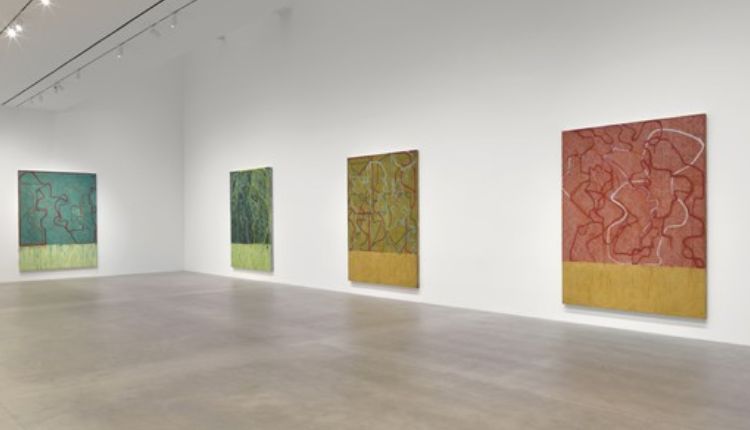Robert Pincus-Witten has long been a favorite of Brice Marden, who has always enjoyed using the techniques of Abstract Expressionism in his paintings. This is because he sees the works as being a form of expression that reflects the artist’s inner life, allowing him to express himself more fully. Besides his abstract style of painting, he also uses the technique of monochrome, which allows him to depict the details of a subject, giving his pieces a more intimate feel.
Abstract Expressionism
Abstract Expressionism is a movement that arose in the early 1940s in New York City. The movement is characterized by strong brushstrokes and large canvases. It reflects the creativity of America in the post-war years.
The first generation of abstract expressionists was influenced by Henri Matisse, Pablo Picasso, and Cubism. They decided to try spontaneous arrangements of line and shape. Some artists, such as Franz Kline and Robert Motherwell, used expressive imagery while others, such as Adolph Gottlieb, were adamant about using paint in a strictly abstract manner.
By the late 1950s, some abstract painters were returning to imagery. Jackson Pollock, for example, created a series of “action paintings.” These figurative works featured bright colors and a busy feel.
Monochrome
If you have a chance to attend Brice Marden’s upcoming show at the Gagosian Gallery in New York, you’re in luck. The exhibit includes many of the artist’s wacky, wacky monochromes, including a painting that takes its inspiration from the hydra, an ancient Greek hydra that looks like a crocodile.
Besides being a talented painter, Marden was a well-rounded human being who grew up in the Bronx, went to college, and had an interesting and varied career. In addition to his painting, he was a writer, curator, and art dealer who worked with the Gagosian Gallery.
Among other things, Marden’s most impressive works include a series of sculptural etchings and aquatints depicting Greek temples. He also created the Zen Study 6 (Early State) from the Cold Mountain Series.
Paintings
In the early 1990s, Robert Pincus-Witten wrote an essay on Brice Marden’s Grove Group series. The series is an extensive body of work which includes drawings, gridded drawings, and paintings.
Marden’s grove paintings refer to Greece through allusion. All are 6 by 9 feet and depict different shapes and sizes. They are the result of meditation on perception and perception itself.
The grove paintings are not merely a fanciful allusion to Greece; they are a contemplation on the nature and culture of perception. For instance, the paintings are based on Greek olive trees, but not all of them contain an olive leaf.
Journals
Robert Pincus-Witten’s book on Brice Marden’s journals is a unique and insightful piece. It offers new insight into a key period in the artist’s career. And its approach is both scholarly and humorous.
Marden was an eminent painter, working within the Minimalist aesthetic. He studied under Josef Albers, who influenced his work with a palette that was very subtle. As a result, his paintings often seem to be a highly refined consciousness. The paintings are ’empirical’ records of Marden’s struggle to reconcile nature with culture.
Marden’s early paintings were largely planar perpendicularities. But he changed his approach. By introducing drips and splatters, he drew attention to the dripping of the drips, as if they were a tree’s rings.
Comparisons with Puvis de Chavannes
Robert Pincus-Witten wrote an essay on Brice Marden and his Grove Group. He also predicted that the new artist would embrace calligraphy. In doing so, he brought fresh thinking to a number of Marden’s earlier works. As the long-time curator of the Gagosian gallery in New York, Pincus-Witten drew comparisons between the art of Brice Marden and that of other artists in the ilk of Pablo Picasso, Andy Warhol, and Roy Lichtenstein.
There are many similarities between Brice Marden’s Grove Group series and that of Puvis de Chavannes. For example, both of these artists are known for their use of monochrome. But while Marden’s palette is a bit more refined than his ancestor’s, it’s not quite on par with that of his predecessor.
Ellsworth Kelly
Marden’s color once struck viewers as oddly mannerist. But now, as with Barnett Newman, his works have a sophistication.
Marden is one of the most discreet and poignantly aesthetic artists of our age. His paintings are distinguished by their hypnotic optical effects. They draw from a variety of sources, including the temple architecture of Thira. He is also known for his collages and his use of metaphyseal images.
Wrapping It Up
Marden’s early notebooks are an intriguing source of information. They reveal his early beliefs and attitudes. This includes a neo-Greek zeal for the Edwardian public school. It also demonstrates his nostalgia for the glories of limpid beauty that have been eroded.

